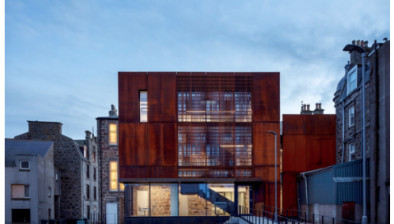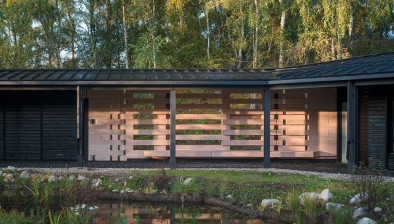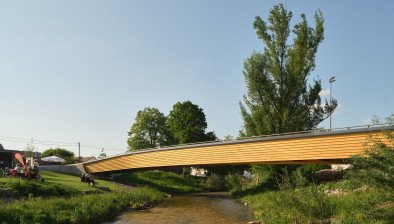Moxon Architects complete sustainable timber bridge for German town
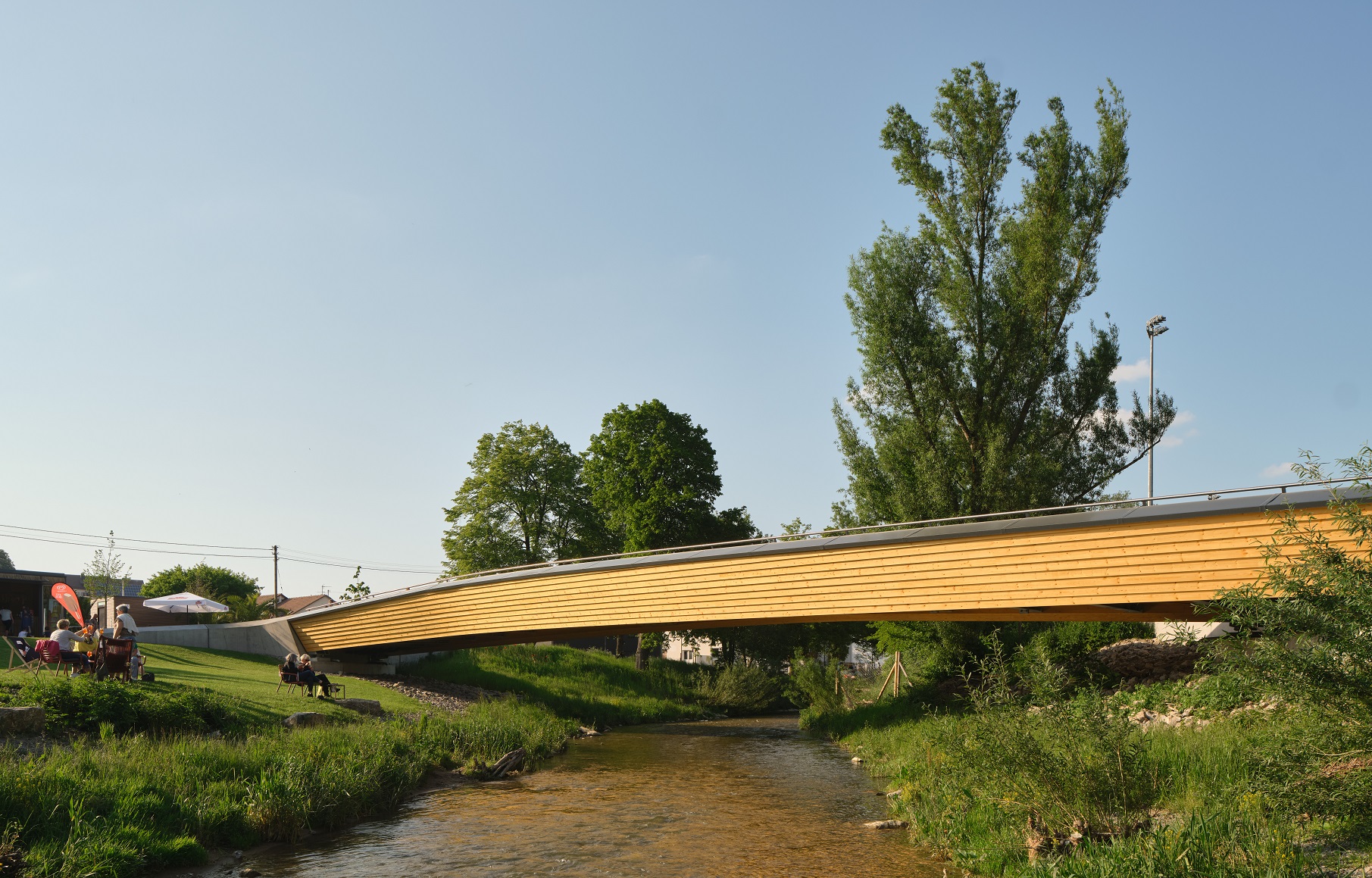
Moxon Architects has completed a pedestrian and cycle bridge for the town of Balingenin southern Germany, a design collaboration with timber bridge engineering specialist Ingenieurbüro Miebach.
Balingen Footbridge embodies the town’s ambitious dual commitment to design excellence and a sustainable future, while offering a sympathetic response to the natural river setting. Unveiled ahead of the 2023 Baden-Würtemberg Garden Show, the bridge will form a focal showpiece of a 14-hectare regeneration for the event.
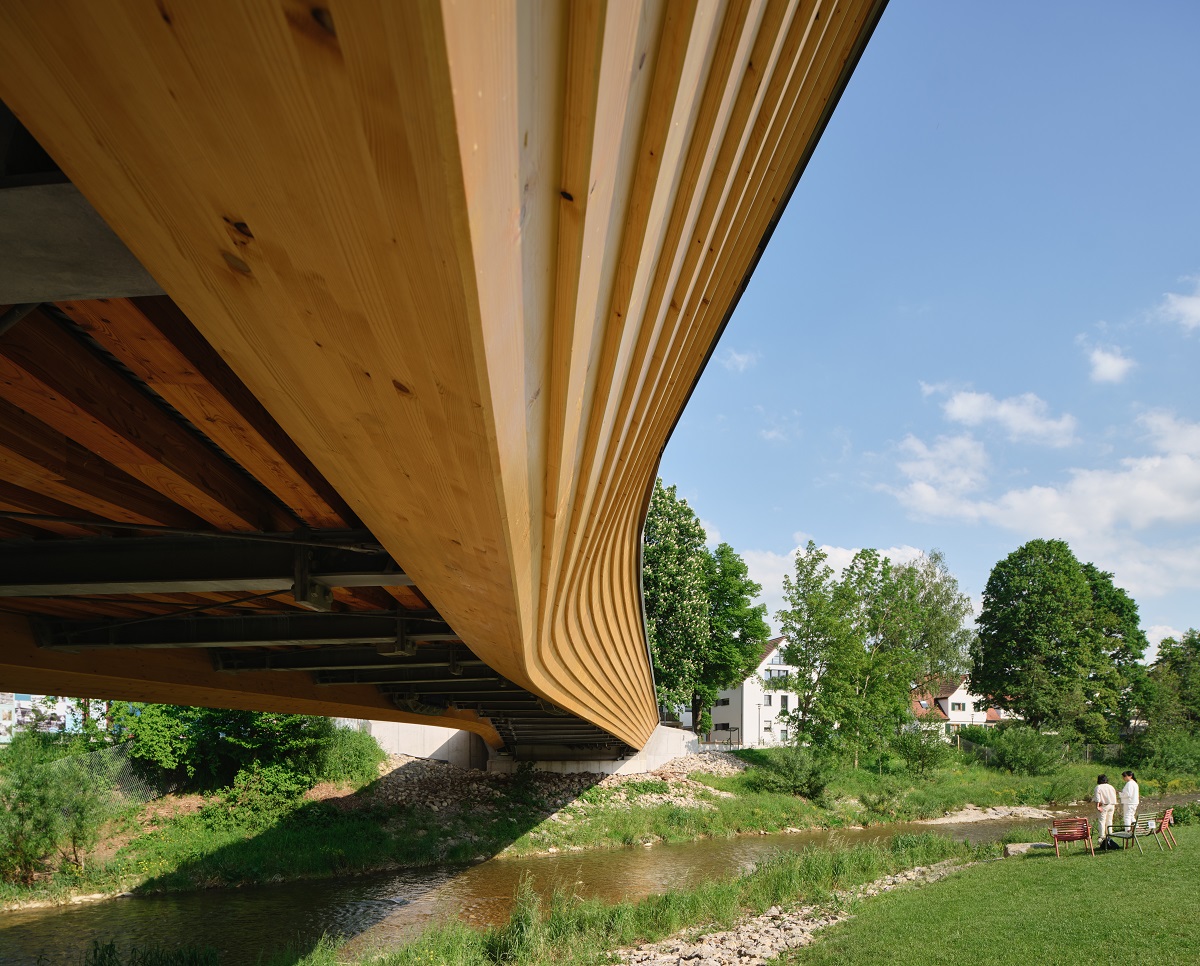
As well as linking event venues, the new bridge strengthens Balingen’s network of foot and cycle paths and will serve as a catalyst for further responsible regeneration of the River Eyach, a revived amenity which runs through the town. The footbridge also sets an important exemplar in the creation of sustainable infrastructure, through timber construction, in place of steel and concrete.
The innovative, sustainable, and low-maintenance bridge features a pair of structural timber beams spanning 40 metres over the river at an oblique angle, cradling pedestrians and cyclists upon a 3.0mwide fibre-reinforced plastic deck. At both ends of the bridge, the structure widens to 5.0m, allowing comfortable access.
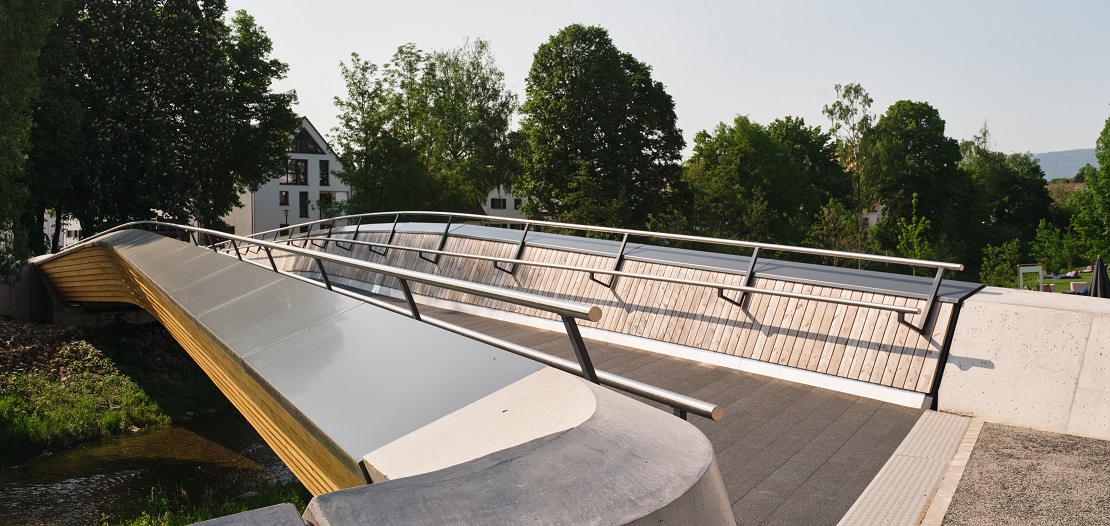
The two subtly angled and tapered beams are designed to flare outwards in plan as they approach either riverbank, embracing the town’s network of footpaths and cycle tracks. The beams extend above the level of the deck to form the bridge’s parapet sides –a necessity allowing the bridge to clear future predicted flood levels while enabling fully accessible gradients at either approach.
The visible, outward-leaning outer faces of the shaped glulam beams will weather naturally over time. The inner, pedestrian-facing surfaces are clad in native timber slats with integrated lighting and handrails.

Ingenieurbüro Miebach and Moxon won the project in an invited competition in 2019, and the timber bridge adds to both practices’ rich bridge portfolios; Moxon’s includes a pair of bridges over the Regents Canal for the King’s Cross regeneration in London, a pedestrian swing bridge at GreenwichReachin London and the recently completed meandering footbridge along the Thames Path beneath the existing Barnes Bridge at Chiswick.
Ezra Groskin, director at Moxon Architects, which has offices in Scotland and London, said: “Balingen Footbridge demonstrates not just the aesthetic and structural potential of timber in place of steel in bridge-building, but the carbon that can be sequestered. Through offsetting the concrete going into the abutments, timber allows you to create a more sustainable piece of infrastructure, that, with the correct maintenance, can last as long as any steel structure.
“Working with a world-leading engineer fully committed to timber structures, and a town which prioritises the delivery of sustainable infrastructure, has been an inspiring and informative process. Weare excited to bring the experience and knowledge gained through this European collaboration back to the UK, where we are optimistic it can inform our approach to designing both bridges and buildings.”
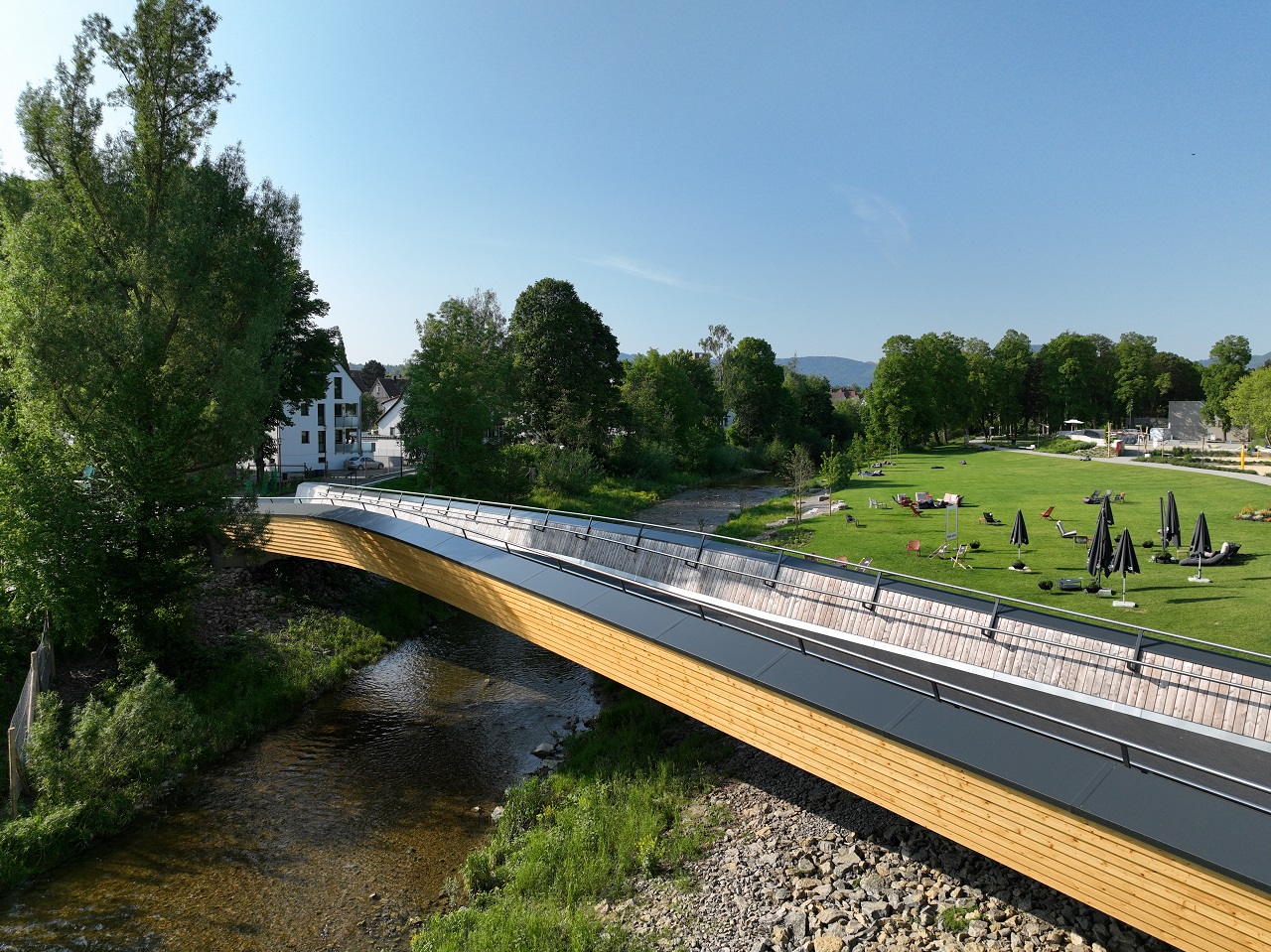
Frank Miebach, director at Ingenieurbüro Miebachadded: “The big challenge in this project was working within the structural limitations that such a pared-back, elegant aesthetic can impose. Thanks to the excellent exchange with the architects, we were able to give the simple structural form of a trough bridge a unique typology.
“We were able to implement our premise for good structural wood protection in an appealing way through the inclined girders. This shows that together we can interpret wood in a contemporary way for bridges, and hope to herald a paradigm shift.”
All images © Simon Kennedy


















